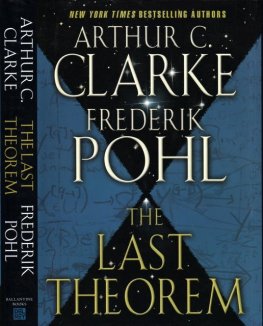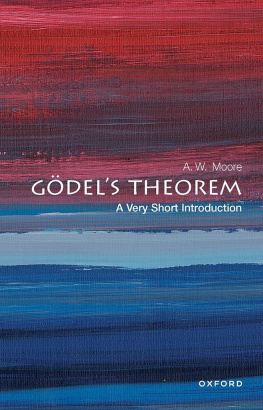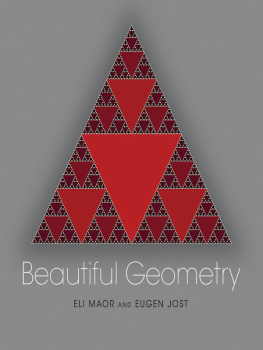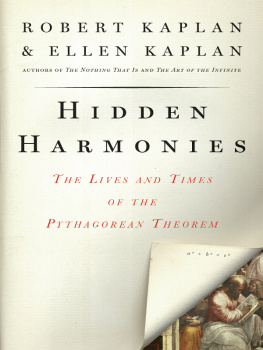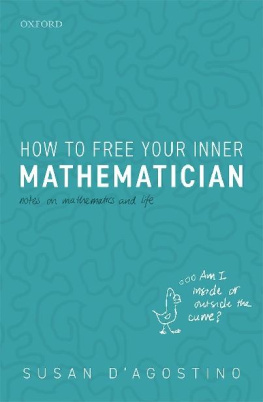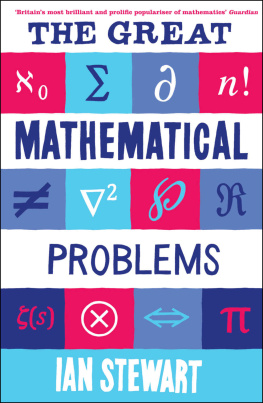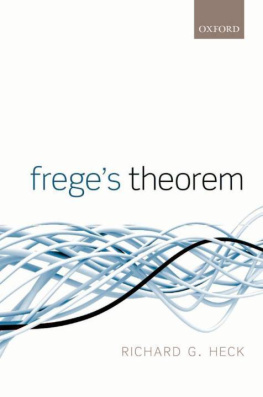Contents
Guide

The author and publisher have provided this e-book to you for your personal use only. You may not make this e-book publicly available in any way. Copyright infringement is against the law. If you believe the copy of this e-book you are reading infringes on the authors copyright, please notify the publisher at: us.macmillanusa.com/piracy.
I am often asked what its like to be a mathematicianwhat a mathematicians daily life is like, how a mathematicians work gets done. In the pages that follow I try to answer these questions.
This book tells the story of a mathematical journey, a quest, from the moment when the decision is made to venture forth into the unknown until the moment when the article announcing a new resulta new theorem is accepted for publication in an international journal.
Far from moving swiftly between these two points, in a straight line, the mathematician moves forward haltingly, along a long and winding road. He meets with obstacles, suffers setbacks, sometimes loses his way. As we all do from time to time.
Apart from a few insignificant details, the story I have told here is in agreement with reality, or at least with reality as I experienced it.
My thanks to Olivier Nora for having encouraged me, on the occasion of a chance encounter, to write this book; thanks to Claire for her careful reading and many helpful suggestions; thanks to Claude for his fine illustrations; thanks to Ariane Fasquelle and the staff at Grasset for grasping at once my purpose in writing this book and for their care in preparing the final manuscript for the typesetter; thanks, finally, to Clment for an unforgettable collaboration, without which this book wouldnt exist.
Cdric Villani
Paris, December 2011
Lyon
March 23, 2008
One oclock on a Sunday afternoon. Normally the laboratory would be deserted, were it not for two busy mathematicians in need of a quiet place to talkthe office that Ive occupied for eight years now on the third floor of a building on the campus of the cole Normale Suprieure in Lyon.
Im seated in a comfortable armchair, insistently tapping my fingers on the large desk in front of me. My fingers are spread apart like the legs of a spider. Just as my piano teacher trained me to do, years ago.
To my left, on a separate table, a computer workstation. To my right a cabinet containing several hundred works of mathematics and physics. Behind me, neatly arranged on long shelves, thousands and thousands of pages of articles, lawfully photocopied back in the days when scientific journals were still printed on paper, and a great many mathematical monographs, unlawfully photocopied back in the days when I didnt make enough money to buy all of the books I wanted. There are also a good three feet of rough drafts of my own work, meticulously archived over many years, and quite as many feet of handwritten notes, the legacy of hours and hours spent listening to research talks. In front of me, Gaspard, my laptop computer, named in honor of Gaspard Monge, the great mathematician and revolutionary. And a stack of pages covered with mathematical symbolsmore notes from every one of the eight corners of the world, assembled especially for this occasion.
My partner, Clment Mouhot, stands to one side of the great whiteboard that takes up the entire wall in front of me, marker in hand, eyes sparkling.
So whats up? Your message was pretty vague.
My old demons back againregularity for the inhomogeneous Boltzmann.
Conditional regularity? You mean, modulo minimal regularity bounds?
No, unconditional.
Completely? Not even in a perturbative framework? You really think its possible?
Yes, I do. Ive been working on it again for a while now and Ive made pretty good progress. I have some ideas. But now Im stuck. I broke the problem down using a series of scale models, but even the simplest one baffles me. I thought Id gotten a handle on it with a maximum principle argument, but everything fell apart. I need to talk.
Go on, Im listening.
* * *
I went on for a long time. About the result I have in mind, the attempts Ive made so far, the various pieces I cant fit together, the logical puzzle that so far has defeated me. The Boltzmann equation remains intractable.
Ah, the Boltzmann! The most beautiful equation in the world, as I once described it to a journalist. I fell under its spell when I was youngwhen I was writing my doctoral thesis. Since then Ive studied every aspect of it. Its all there in Boltzmanns equation: statistical physics, times arrow, fluid mechanics, probability theory, information theory, Fourier analysis, and more. Some people say that I understand the mathematical world of this equation better than anyone alive.
Seven years ago I initiated Clment into this mysterious world when he began his own thesis under my direction. He was eager to learn. Certainly hes the only person who has read everything Ive written on Boltzmanns equation. Now Clment is a respected member of the profession, a mathematician in his own right, brilliant, eager to get on with his own research.
Seven years ago I helped him get started; today Im the one who needs help. The problem Ive chosen to work on is exceedingly difficult. Ill never solve it by myself. Ive got to be able to explain what Ive done so far to someone who knows the theory inside out.
Lets assume grazing collisions, okay? A model without cutoff. Then the equation behaves like a fractional diffusion, degenerate, of course, but a diffusion just the same, and as soon as youve got bounds on density and temperature you can apply a Moser-style iteration scheme, modified to take nonlocality into account.
A Moser scheme? Hmmmm Hold on a moment, I need to write this down.
Yes, a Moser-style scheme. The key is that the Boltzmann operator true, the operator is bilinear, its not local, but even so its basically in divergence formthats what makes the Moser scheme work. You make a nonlinear function change, you raise the power. You need a little more than temperature, of course, theres a matrix of moments of order 2 that have to be controlled. But the positivity is the main thing.
Sorry, I dont followwhy isnt temperature enough?
I paused to explain why, at some length. We discussed. We argued. Before long the board was flooded with symbols. Clment was still unsure about the positivity. How can strict positivity be proved without any regularity bound? Is such a thing even imaginable?
Its not so shocking, when you think about it: collisions produce lower bounds; so does transport, in a confined system. So it makes sense. Unless were completely missing something, the two effects ought to reinforce each other. Bernt tried a while ago, he gave up. A whole bunch of people have tried, but no ones had any luck so far. Still, its plausible.
Youre sure that the transport is going to turn out to be positive without regularity? And yet without collisions, you bring over the same density value, it doesnt become more positive
I know, but when you average the velocities, it strengthens the positivitya little like what happens with the averaging lemmas for kinetic equations. But here were dealing with positivity, not regularity. No ones really looked at it from this angle before. Which reminds me when was it? Thats it! Two years ago, at Princeton, a Chinese postdoc asked me a somewhat similar question. You take a transport equation, in the torus, say. Assuming zero regularity, you want to show that the spatial density becomes strictly positive. Without regularity! He could do it for free transport, and for something more general on small time scales, but for larger times he was stymied. I remember asking other people about it at the time, but no one had a convincing answer.


